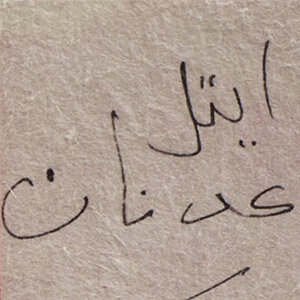


Last updated on Thu 21 May, 2020


ETEL ADNAN
The uprising of colors
ends May 30 2020
Etel Adnan wished this exhibition as a splash of hope amidst the current severe political and economic crisis Lebanon is witnessing. With this in mind, the gallery has produced the show against all odds, a gesture of cultural resilience that is meant to contribute, on our modest scale, to the sustainability of the arts sector in Beirut. The title of the exhibition, The uprising of colors, therefore refers to art’s capacity to bring colors into a grim quotidian.
Welcoming visitors in the entrance of the space, a wallpaper entitled “Le Soleil Toujours”, literally translated as “The Sun Always” depicts the shining star meant as a colorful sign of optimism. Similar to the process followed for her ceramic walls or billboards, the artist in this case has produced a drawing that was specifically meant to become a large-scale work. In the background, a reading of the Arab Apocalypse can be heard, as the original manuscript text scrolls on a screen: the iconic collection of poems first published in 1980 seems ever relevant, reflecting on Lebanon’s constant mutations and dislocation. While Etel Adnan’s writing often chronicles the harsh realities she witnesses, her visual work is always joyful, offering suspended moments of peace in a colorful universe.
The exhibition proposes an overview of Etel Adnan’s multidimensional practice: her small format paintings fill the space; and with simple lines and colors, her compositions flow naturally, painted in one sitting with a knife palette. The spontaneous act results in work that is never contrived, and that radiates joy. A series of leporellos bridges between her writings and her visual art work: they unfold, filled with words alternating with abstract colors and shapes.
The tapestries on show are recently produced, based on cartons from the 60s for some, and are handwoven in Aubusson in France. Tapestries are a medium of choice for Etel Adnan, ever since she discovered in the early 50s The Lady and the Unicorn, a series of six tapestries dating back to the 16th century. Later on, she visited the Wissa Wassef center in Harrania, Egypt and she was fascinated by the natural dying of the wool, and the representation of nature in those tapestries. She brings a traditional feminine activity into the contemporary realm, which allows her to play with the formats of her works.
Join us in our endless discovery of modern and contemporary Arab art